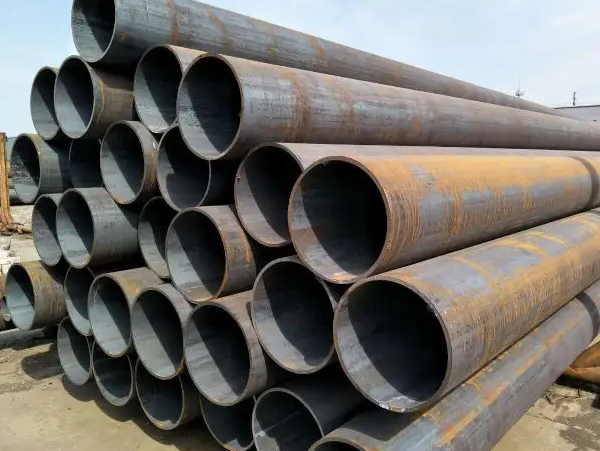Are seamless steel pipes and welded pipes the same strength?
There are some differences in the strength of seamless steel pipes and welded steel pipes. Generally, seamless steel pipes have higher tensile strength than welded pipes.
1. Structure and processing technology
Welded pipes are made of steel plates or steel strips as raw materials and processed through multiple processes. Its structure is a long welded component, usually composed of multiple welded joints. The seamless pipe is made of round steel or square billet through multiple processes such as perforation, heating, drawing and cooling, and its structure is an integral seamless pipe.
Since the welded pipe is composed of multiple joints, a certain stress concentration will occur at the joints, resulting in lower strength of the welded part. Since seamless pipes have an overall seamless structure, their strength is higher than welded pipes.

2. Material differences
The different materials used for welded pipes and seamless pipes are also an important reason for the difference in strength. Welded pipes are generally produced from ordinary steels such as Q235B and Q345B, which have relatively low strength, the commonly used standard for welded pipes is
ASTM A53; while seamless pipes are made from high-strength alloy steels such as 16Mn and 27SiMn, and their strength and corrosion resistance are better than those of welded pipes.
3. Strength test methods for seamless steel pipes and welded pipes
The strength testing methods of steel pipes mainly include tensile test, compression test, bending test, etc. These tests can be used to test the mechanical properties of steel pipes. In the test, the tensile strength of seamless steel pipes was slightly higher than that of welded pipes, but the strength test results of welded pipes were more uniform. This is because during the manufacturing process of welded pipes, the weld seam will be heated and cooled, making the grain changes and stress concentration at the weld seam more obvious.
4. Practical applications of seamless steel pipes and welded steel pipes
In the industrial field, seamless steel pipes are used in a wide range of applications, such as petroleum, chemical industry, aerospace, machinery, ships and many other industries. The applications of welded pipes are mainly concentrated in low-pressure fluid transportation and construction facilities. This is because seamless steel pipes have relatively high strength and corrosion resistance and can withstand high-pressure media and harsh working environments.
Seamless steel pipes are mainly used in some occasions that require high material strength, such as manufacturing high-voltage equipment, nuclear power plants, etc. Since the strength of welded pipe joints is relatively low, welded steel pipes are prone to weld cracks under high pressure.
In addition, due to the good corrosion resistance of seamless pipes, seamless pipes are also indispensable in some situations with complex environments and high requirements for material corrosion resistance, such as pipe explosions, offshore platforms, etc.
Conclusion:
To sum up, the strength difference between welded pipes and seamless pipes mainly comes from their structure, process and material. The two have different advantages and disadvantages in different applications, and thus will be different in practical applications. As high-strength, high-precision pipes, seamless steel pipes can usually withstand high pressure and stress, while welded pipes are suitable for low-pressure, low-cost application scenarios. Therefore, during the material selection and use process, it is necessary to choose the appropriate material according to the specific situation.
Go here to learn more: Seamless vs Welded pipe


